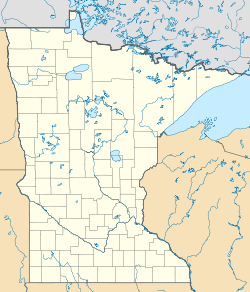통계적 의미론
Statistical semantics| 의미론 | ||||||||
|---|---|---|---|---|---|---|---|---|
| ||||||||
| 컴퓨팅 | ||||||||
| ||||||||
언어학에서 통계적 의미론에서는 통계적 의미론들을 단어나 구문의 의미를 결정하는 문제에 적용하는데, 이상적으로는 무감독적 학습을 통해 최소한 정보 검색의 목적에 충분한 정도의 정밀도를 갖는다.
역사
통계적 의미론이라는 용어는 Warren Weaver가 기계 번역에 관한 그의 잘 알려진 논문에서 처음 사용되었다.[1] 그는 기계번역을 위한 워드센스 해소가 주어진 목표어 근처에 있는 컨텍스트 워드의 공존 빈도에 기초해야 한다고 주장했다. "한 단어는 그것이 유지하는 회사에 의해 특징지어진다"는 근본적인 가정은 J.R.에 의해 주창되었다. 첫째,[2] 이 가정은 언어학에서는 분포 가설이라고 알려져 있다.[3] 에밀 델라베이는 통계적 의미론을 "단어의 의미와 그 빈도와 재발 순서에 대한 통계적 연구"[4]로 정의했다. "Furnas et al. 1983"은 통계적 의미론에 대한 기초적 기여로 자주 인용된다.[5] 그 분야의 초기 성공은 잠재된 의미 분석이었다.
적용들
통계적 의미론의 연구는 대규모 기업에 통계적 기법을 적용함으로써, 분포 가설을 사용하여 의미론의 많은 측면을 발견하는 매우 다양한 알고리즘을 만들어냈다.
- 단어 의미에서의[6][7][8][9] 유사성 측정
- 단어 관계의 유사성 측정
- 유사성 기반 일반화[11] 모델링
- 지정된 연관성을[12] 가진 단어 검색
- 단어[13] 간 관계 분류
- 문서에서[14][15] 키워드 추출
- 텍스트의[16] 응집성 측정
- 다양한[17] 단어의 감각을 발견한다.
- 말의[18] 다른 감각을 구분하는 것
- 단어의[19] 부인지적 측면
- 칭찬과 비판의[20] 구별
관련분야
통계적 의미론은 전체 문서, 문서 모음 또는 명명된 실체(사람, 장소, 조직의 이름)에 초점을 맞추는 경향이 있는 텍스트 마이닝과는 달리 공통어의 의미와 공통어 사이의 관계에 초점을 맞춘다. 통계적 의미론(statistical semantics)은 계산적 의미론(computing semantics)의 하위 분야로, 다시 계산 언어학과 자연 언어 처리의 하위 분야가 된다.
통계적 의미론(위에서 열거한)의 적용의 많은 부분은 통계적 의미론의 말뭉치 기반 알고리즘 대신 어휘 기반 알고리즘으로 다룰 수도 있다. 말뭉치 기반 알고리즘의 한 가지 장점은 그것들이 일반적으로 어휘 기반 알고리즘만큼 노동 집약적이지 않다는 것이다. 또 다른 장점은 그것들이 보통 어휘 기반의 알고리즘보다 새로운 언어에 적응하기 쉽다는 것이다. 그러나 애플리케이션에서 최고의 성능은 종종 두 가지 접근방식을 결합하여 달성된다.[21]
참고 항목
참조
원천
- Delavenay, Emile (1960). An Introduction to Machine Translation. New York, NY: Thames and Hudson. OCLC 1001646.
- Firth, John R. (1957). "A synopsis of linguistic theory 1930-1955". Studies in Linguistic Analysis. Oxford: Philological Society: 1–32.
- 다시 인쇄됨
- Frank, Eibe; Paynter, Gordon W.; Witten, Ian H.; Gutwin, Carl; Nevill-Manning, Craig G. (1999). "Domain-specific keyphrase extraction". Proceedings of the Sixteenth International Joint Conference on Artificial Intelligence. IJCAI-99. 2. California: Morgan Kaufmann. pp. 668–673. CiteSeerX 10.1.1.148.3598. ISBN 1-55860-613-0.
- Furnas, George W.; Landauer, T. K.; Gomez, L. M.; Dumais, S. T. (1983). "Statistical semantics: Analysis of the potential performance of keyword information systems" (PDF). Bell System Technical Journal. 62 (6): 1753–1806. doi:10.1002/j.1538-7305.1983.tb03513.x. S2CID 22483184. Archived from the original (PDF) on 2016-03-04. Retrieved 2012-07-12.
- Hearst, Marti A. (1992). "Automatic Acquisition of Hyponyms from Large Text Corpora" (PDF). Proceedings of the Fourteenth International Conference on Computational Linguistics. COLING '92. Nantes, France. pp. 539–545. CiteSeerX 10.1.1.36.701. doi:10.3115/992133.992154. Archived from the original (PDF) on 2012-05-22. Retrieved 2012-07-12.
- Landauer, Thomas K.; Dumais, Susan T. (1997). "A solution to Plato's problem: The latent semantic analysis theory of the acquisition, induction, and representation of knowledge". Psychological Review. 104 (2): 211–240. CiteSeerX 10.1.1.184.4759. doi:10.1037/0033-295x.104.2.211.
- Lund, Kevin; Burgess, Curt; Atchley, Ruth Ann (1995). "Semantic and associative priming in high-dimensional semantic space" (PDF). Proceedings of the 17th Annual Conference of the Cognitive Science Society. Cognitive Science Society. pp. 660–665.[영구적 데드링크]
- McDonald, Scott; Ramscar, Michael (2001). "Testing the distributional hypothesis: The influence of context on judgements of semantic similarity". Proceedings of the 23rd Annual Conference of the Cognitive Science Society. pp. 611–616. CiteSeerX 10.1.1.104.7535.
- Pantel, Patrick; Lin, Dekang (2002). "Discovering word senses from text". Proceedings of ACM SIGKDD Conference on Knowledge Discovery and Data Mining. KDD '02. pp. 613–619. CiteSeerX 10.1.1.12.6771. doi:10.1145/775047.775138. ISBN 1-58113-567-X.
- Sahlgren, Magnus (2008). "The Distributional Hypothesis" (PDF). Rivista di Linguistica. 20 (1): 33–53.
- Terra, Egidio L.; Clarke, Charles L. A. (2003). "Frequency estimates for statistical word similarity measures" (PDF). Proceedings of the Human Language Technology and North American Chapter of Association of Computational Linguistics Conference 2003. HLT/NAACL 2003. pp. 244–251. CiteSeerX 10.1.1.12.9041. doi:10.3115/1073445.1073477. Archived from the original (PDF) on 2013-11-03. Retrieved 2012-07-12.
- Turney, Peter D. (May 2000). "Learning algorithms for keyphrase extraction". Information Retrieval. 2 (4): 303–336. arXiv:cs/0212020. CiteSeerX 10.1.1.11.1829. doi:10.1023/A:1009976227802. S2CID 7007323.
- Turney, Peter D. (2001). "Answering subcognitive Turing Test questions: A reply to French". Journal of Experimental and Theoretical Artificial Intelligence. 13 (4): 409–419. arXiv:cs/0212015. CiteSeerX 10.1.1.12.8734. doi:10.1080/09528130110100270. S2CID 59099.
- Turney, Peter D. (2003). "Coherent keyphrase extraction via Web mining". Proceedings of the Eighteenth International Joint Conference on Artificial Intelligence. IJCAI-03. Acapulco, Mexico. pp. 434–439. arXiv:cs/0308033. Bibcode:2003cs........8033T. CiteSeerX 10.1.1.100.3751.
- Turney, Peter D. (2004). "Word sense disambiguation by Web mining for word co-occurrence probabilities". Proceedings of the Third International Workshop on the Evaluation of Systems for the Semantic Analysis of Text. SENSEVAL-3. Barcelona, Spain. pp. 239–242. arXiv:cs/0407065. Bibcode:2004cs........7065T.
- Turney, Peter D. (2006). "Similarity of semantic relations". Computational Linguistics. 32 (3): 379–416. arXiv:cs/0608100. Bibcode:2006cs........8100T. CiteSeerX 10.1.1.75.8007. doi:10.1162/coli.2006.32.3.379. S2CID 2468783.
- Turney, Peter D.; Littman, Michael L. (October 2003). "Measuring praise and criticism: Inference of semantic orientation from association". ACM Transactions on Information Systems. 21 (4): 315–346. arXiv:cs/0309034. Bibcode:2003cs........9034T. CiteSeerX 10.1.1.9.6425. doi:10.1145/944012.944013. S2CID 2024.
- Turney, Peter D.; Littman, Michael L. (2005). "Corpus-based Learning of Analogies and Semantic Relations". Machine Learning. 60 (1–3): 251–278. arXiv:cs/0508103. Bibcode:2005cs........8103T. CiteSeerX 10.1.1.90.9819. doi:10.1007/s10994-005-0913-1. S2CID 9322367.
- Turney, Peter D.; Littman, Michael L.; Bigham, Jeffrey; Shnayder, Victor (2003). "Combining Independent Modules to Solve Multiple-choice Synonym and Analogy Problems". Proceedings of the International Conference on Recent Advances in Natural Language Processing. RANLP-03. Borovets, Bulgaria. pp. 482–489. arXiv:cs/0309035. Bibcode:2003cs........9035T. CiteSeerX 10.1.1.5.2939.
- Weaver, Warren (1955). "Translation" (PDF). In Locke, W.N.; Booth, D.A. (eds.). Machine Translation of Languages. Cambridge, Massachusetts: MIT Press. pp. 15–23. ISBN 0-8371-8434-7.
- Yarlett, Daniel G. (2008). Language Learning Through Similarity-Based Generalization (PDF) (PhD thesis). Stanford University. Archived from the original (PDF) on 2014-04-19.


